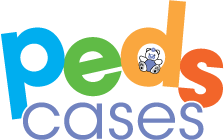Pediatric Education Online

This episode covers an approach to children with altered level of consciousness. We present an approach to the initial management in these cases, with a focus on the ABC and DFG approach. Investigations and imaging are discussed. Some specific causes of altered LOC are covered. This episode was written by Peter MacPherson and Dr. Melanie Lewis. Peter is a medical student at the University of Alberta. Dr. Lewis is a general pediatrician and an Associate Professor of Pediatrics at the University of Alberta and Stollery Children's Hospital. She is also the Clerkship Director.
Related Content:
Comments
I think the script that is posted for the podcast is incomplete. Where can I access the whole script for study purposes?
I know it's 14 years later that the comment was posted but I just listened to the podcast. I made detailed, transcript-style notes I will share for those who are also looking for a complete script:
*Start of notes*
4. Management
a) Approach to a child with an acute change in LOC: ABCDEFG approach (+ Chem strip for glucose)
b) Look for signs of herniation syndrome: pupil changes, asymmetric or absent EOM, abnormal motor responses to pain stimuli (e.g., decerebrate and decorticate posturing are abnormal to noxious stimuli, associated with pathologies such as stroke)
—> if there is a herniation syndrome, patient would need endotracheal intubation, mechanical ventilation, neurosurgery STAT
—> also get IV access
c) If no herniation, get bloods + do surveys for life-threatening issues
-labs: serum glucose, blood gas, electrolytes, renal function, liver function, CBC + diff, blood and urine cultures, urine and serum toxicology screen; also serum osmolality, serum ammonia, serum lactate.
+ in infant/toddler, consider a metabolic disorder to consider in an infant and toddler
-ensure glucose is running; IV dextrose (e.g., D10 or D12.5%, hold proteins); don’t forget b/c certain pathologies can cause irreversible neurologic dysfunction
-if serum glucose is normal, look for opioid toxicity; if positive, IV naloxone
d) Detailed neurologic and general exam
-Look for focal neurologic signs, which tends to occur with structural causes. usually no focal medical signs in medical causes but there are exceptions
—> always do a GCS
-Vital signs are important
-General exam
—> fever: suggests CNS infection as a cause, also seen in some kinds of toxic ingestion
—> respiratory rate + pattern
—> pulse or BP can be abnormal in herniation syndromes
—> petechiae and purpura (w/ fever, suggest meningiocccaemia but without fever suggest bleeding tendency or trauma and by extension, an intercerebral bleed
—> infants: examine fontanelles to see if bulging or sunken
—> if impaired cough and gag reflex, require endotracheal intubation
—> if GCS less than 8, consider intubation
e) Imaging
-Consider neuroimaging: CT scan
—> MRI has advantages but limited by availability and logistic concern
f) Look for signs of increased ICP and perform a LP
—> make sure: if no ICP inc, no bleeding dysfunction, and stable child, then can do LP
—> How to look for signs of increased ICP: increased ICP on exam or neuroimaging, determined by the cushing response which is hypertension, bradycardia, impaired consciousness. accompanied by altered respiration often
—> papilledema often a better indicator for chronic increase in ICP
6. Common causes of altered levels of consciousness
-poisoning/toxic ingestion extremely common
—> toddlers, generally accidental. adolescents, generally intentional
—> suspect possibility of toxic ingestion especially in afebrile children; often unable to elicit a history
—> onset of symptoms tend to occur gradually over hours or days
—> ask about all OTC and prescription medications in the home, not just the ones they think they could have accessed
—> ask about amount (how much left in the pills to estimate maximum ingestion), when ingestion happened, and where
-trauma is more common throughout childhood
—> can have focal neurologic signs, but others there are no focal neurological signs
—> can have accidental or intentional. most commonly accidental but evaluate if mechanism is consistent w/ history
—> consider child abuse for any infant with an altered levels of consciousness. In shaken baby syndrome: CT shows subdural haematoma and diffuse cerebral oedema. retinal haemorrhages may be visible. can be mimicked by falls greater than 3 stories or high-speed vehicle motor accidents
-meningitis and encephalitis: often the culprit in altered levels of consciousness
—> presentation can be subtle; fever and irritability may be the main complaints so be diligent in looking for them
—> shoudl be suspected in the case of fever, leukocytosis
—> dx with CSF exam. empiric abx immediately if unstable or if there are focal neurologic signs
—> if herpes encaphalitis is a concern, antivirals should be taken
—> remember west nile, varicella, or influenza as causes of encephalitis
-seizures/shock can also present
—> can also present as altered levels of consciousness
—> you would have picked up on shock while taking care of the ABCDEFGs
-metabolic causes
—> inborn errors of metabolism often in infancy. DKA is the most common condition that causes altered levels of consciousness and can present in any age
—> hepatic and renal failure can also cause metabolic encepalopathy. on exam, may notice movements disorders like asterixis, tremor, or myoclonus w/ metabolic causes.
7. Take home points
a) Remember approach: structural vs metabolic
b) ABCDEFG and re-assess
c) Glucose can be lifesaving and prevent irreversible neurologic damage
d) Early neuroimaging can be important to r/o shaken baby syndrome (could require neurosurgical interventions)
e) Rapid-onset of symptoms without fever is toxic ingestion until proven otherwise
*End of notes*
I hope it helps!
Monica